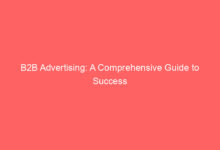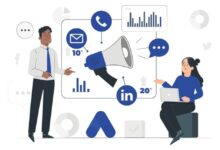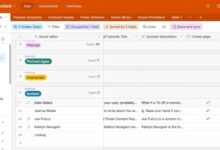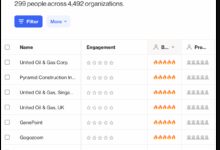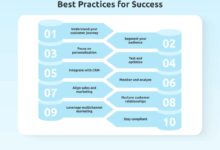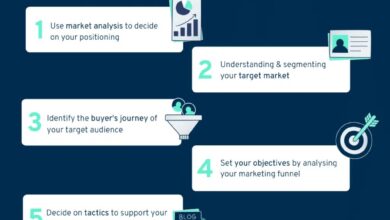B2B Lead Generation: 7 Proven Strategies to Skyrocket Growth
Generating high-quality leads is the lifeblood of any B2B business. In today’s competitive landscape, mastering b2b lead generation isn’t optional—it’s essential for sustainable growth and long-term success.
Understanding B2B Lead Generation: The Foundation of Sales Success

B2B lead generation refers to the strategic process of identifying, attracting, and converting businesses into potential customers for your products or services. Unlike B2C marketing, which often targets individual consumers with emotional appeals, b2b lead generation focuses on logic, value, and long-term ROI. It’s a complex, multi-stage journey that requires precision, consistency, and deep market understanding.
What Exactly Is a B2B Lead?
A B2B lead is a company or decision-maker who has shown interest in your offering—whether through downloading a whitepaper, signing up for a demo, or attending a webinar. These leads are not yet customers but represent potential opportunities for conversion. The quality of a lead is determined by how closely it aligns with your ideal customer profile (ICP).
- Marketing Qualified Lead (MQL): A lead that has engaged with your content but isn’t ready for sales contact.
- Sales Qualified Lead (SQL): A lead that has been vetted by marketing and deemed ready for direct outreach by the sales team.
- Product Qualified Lead (PQL): A lead that has used your product (e.g., via a free trial) and demonstrated intent to upgrade or purchase.
Why B2B Lead Generation Differs from B2C
The B2B buying cycle is significantly longer and involves multiple stakeholders. A single purchase decision may require input from procurement, finance, IT, and executive leadership. This complexity means b2b lead generation must be more targeted, educational, and relationship-driven.
“In B2B, you’re not just selling a product—you’re selling a solution to a business problem.” — HubSpot
According to HubSpot, companies that excel at lead nurturing generate 50% more sales-ready leads at a 33% lower cost.
The 7 Most Effective B2B Lead Generation Strategies in 2024
Not all lead generation tactics are created equal. Some deliver short-term spikes, while others build sustainable pipelines. Below are seven proven b2b lead generation strategies that consistently drive results across industries.
1. Content Marketing with High-Value Offers
Content is the cornerstone of modern b2b lead generation. By creating informative, problem-solving content, you attract prospects actively searching for solutions. The key is to pair this content with gated offers—also known as lead magnets—that require contact information to access.
- E-books and whitepapers addressing industry challenges
- Comprehensive guides (e.g., “The Ultimate Guide to Cloud Migration”)
- Templates, checklists, and toolkits
For example, a SaaS company might offer a free ROI calculator in exchange for an email address. This not only captures leads but also provides insight into their pain points. According to Content Marketing Institute, 72% of B2B marketers say content marketing generates more leads than traditional advertising.
2. Search Engine Optimization (SEO) for B2B Audiences
SEO remains one of the most cost-effective b2b lead generation tools. When done correctly, it ensures your content appears in front of decision-makers at the exact moment they’re researching solutions.
- Target long-tail keywords like “best CRM for mid-sized manufacturing companies”
- Optimize landing pages for conversion with clear CTAs
- Build topical authority by creating content clusters around core themes
A well-optimized blog post can continue generating leads for years. Backlinko’s research shows that the average Google first page result contains 1,447 words—proof that depth and quality matter. Use tools like Ahrefs or SEMrush to identify keyword gaps and track performance.
3. LinkedIn Outreach and Social Selling
LinkedIn is the #1 platform for b2b lead generation. With over 900 million users, including 63 million decision-makers, it’s where B2B buyers spend their time. Social selling—building relationships through content, engagement, and direct outreach—is now a standard practice.
- Optimize your profile with clear value propositions
- Engage with target accounts by commenting on posts and sharing insights
- Use LinkedIn Sales Navigator to identify and connect with ideal prospects
A study by LinkedIn Business found that 80% of B2B leads come from LinkedIn, making it the most effective social channel for lead generation.
4. Email Marketing with Personalization at Scale
Email remains one of the highest ROI channels for b2b lead generation. The average return is $42 for every $1 spent (DMA, 2023). But success depends on segmentation, personalization, and timing.
- Segment lists by industry, job title, or behavior (e.g., downloaded a guide)
- Use dynamic content to tailor messages based on user data
- Automate drip campaigns to nurture leads over time
For instance, a follow-up sequence after a webinar can include a recording, a case study, and a demo offer. Tools like Mailchimp, HubSpot, and ActiveCampaign make it easy to scale personalized outreach.
5. Webinars and Virtual Events
Webinars are powerful lead magnets because they position your brand as an authority while delivering immediate value. They also allow for real-time interaction, which builds trust and accelerates the sales cycle.
- Host educational sessions on trending industry topics
- Invite guest speakers or customers to add credibility
- Collect attendee data for follow-up and scoring
According to Demand Gen Report, 73% of B2B marketers say webinars are the best format for generating high-quality leads.
6. Account-Based Marketing (ABM)
ABM flips traditional b2b lead generation on its head. Instead of casting a wide net, you target a select group of high-value accounts with personalized campaigns. This approach is ideal for enterprise sales with long cycles and high deal values.
- Identify target accounts based on firmographic and behavioral data
- Create custom content and landing pages for each account
- Coordinate sales and marketing efforts for unified outreach
A study by ITSMA found that companies using ABM see a 208% higher ROI than other marketing initiatives. Platforms like Terminus and 6sense enable precise targeting and campaign orchestration.
7. Paid Advertising with Precision Targeting
Paid ads can accelerate b2b lead generation when used strategically. While organic methods take time, paid channels deliver immediate visibility and traffic.
- Run LinkedIn Sponsored Content to reach specific job titles
- Use Google Ads with intent-based keywords (e.g., “buy project management software”)
- Leverage retargeting to re-engage website visitors
The key is to align ad messaging with the buyer’s journey. Top-of-funnel ads should educate, while bottom-funnel ads should drive conversions. According to WordStream, the average click-through rate (CTR) for B2B Google Ads is 3.17%, with conversion rates averaging 5.72%.
Building a High-Converting Lead Capture System
Even the best b2b lead generation strategies fail without a solid lead capture infrastructure. This system includes landing pages, forms, CRM integration, and lead scoring—all designed to convert visitors into leads.
Designing Effective Landing Pages
Landing pages are the gateway to your lead funnel. They must be focused, persuasive, and free of distractions. Every element should guide the visitor toward the desired action—submitting their information.
- Use a clear, benefit-driven headline (e.g., “Boost Your Team’s Productivity by 40%”)
- Include social proof like customer logos or testimonials
- Minimize form fields to reduce friction (name, email, company)
A/B testing is crucial. Unbounce reports that companies running five or more A/B tests per month see conversion rates up to 3x higher than those that don’t.
Lead Capture Forms: Balancing Data and Friction
The more fields you ask for, the lower your conversion rate. However, you need enough data to qualify leads. The solution? Progressive profiling.
- Start with minimal fields for initial offers
- Gradually collect more information through subsequent interactions
- Use smart forms that adapt based on user identity (if known)
For high-value offers (e.g., a free consultation), it’s acceptable to ask for more details like phone number or budget. But for a simple guide download, keep it light.
Integrating with CRM and Marketing Automation
Once a lead is captured, it must flow seamlessly into your CRM (e.g., Salesforce, HubSpot). This ensures no lead falls through the cracks and enables timely follow-up.
- Automate lead assignment to sales reps based on territory or expertise
- Trigger welcome emails and nurture sequences immediately
- Sync lead activity across platforms for a unified view
Marketing automation tools like Marketo or Pardot can score leads based on engagement (e.g., email opens, page visits), helping sales prioritize the hottest prospects.
Lead Nurturing: Turning Prospects into Paying Customers
Only 25% of leads are ready to buy immediately. The rest require nurturing—a process of building trust and providing value over time. Effective b2b lead generation doesn’t stop at capture; it continues through the entire buyer’s journey.
The Role of Drip Campaigns in Lead Nurturing
Drip campaigns are automated email sequences that deliver relevant content based on a lead’s behavior or stage in the funnel. They keep your brand top-of-mind without overwhelming the prospect.
- Send a welcome series after sign-up
- Share case studies to overcome objections
- Invite leads to events or demos when they show higher intent
For example, if a lead downloads a guide on “Reducing Cloud Costs,” the next email could feature a customer story about cost savings, followed by an offer for a free audit.
Using Behavioral Data to Personalize Outreach
Modern marketing platforms track user behavior—pages visited, content downloaded, time spent on site. This data allows for hyper-personalized nurturing.
- Trigger emails when a lead revisits a pricing page
- Recommend content based on past downloads
- Alert sales when a lead from a target account visits key pages
According to Marketo, nurtured leads make 47% larger purchases than non-nurtured leads.
Multi-Channel Nurturing: Beyond Email
While email is powerful, relying on a single channel limits reach. Multi-channel nurturing combines email, social media, retargeting ads, and direct mail for maximum impact.
- Retarget website visitors with LinkedIn or Google Display ads
- Engage leads on social media with personalized messages
- Send physical mail (e.g., a branded notebook) to high-potential accounts
This omnichannel approach increases touchpoints and reinforces your message across platforms.
Measuring and Optimizing Your B2B Lead Generation Performance
You can’t improve what you don’t measure. Tracking the right metrics allows you to identify bottlenecks, optimize campaigns, and prove ROI to stakeholders.
Key B2B Lead Generation Metrics to Track
Focus on metrics that reflect both quantity and quality of leads:
- Lead Conversion Rate: Percentage of visitors who become leads
- Cost Per Lead (CPL): Total spend divided by number of leads generated
- Lead-to-Customer Rate: Percentage of leads that close as customers
- Customer Acquisition Cost (CAC): Total sales and marketing cost divided by new customers
- Return on Ad Spend (ROAS): Revenue generated per dollar spent on ads
Use dashboards in tools like Google Analytics, HubSpot, or Tableau to monitor these in real time.
A/B Testing for Continuous Improvement
Small changes can have big impacts. A/B testing allows you to experiment with different headlines, CTAs, images, and layouts to find what works best.
- Test two versions of a landing page headline
- Compare CTA button colors or text (e.g., “Get Started” vs. “See Pricing”)
- Experiment with form length and placement
VWO reports that companies running regular A/B tests see an average conversion lift of 15-20%.
Using Analytics to Refine Your Ideal Customer Profile
Not all leads are equal. By analyzing which leads convert to customers, you can refine your ICP and focus on high-value segments.
- Identify common traits among closed-won deals (industry, company size, location)
- Map the customer journey of top-performing accounts
- Adjust targeting criteria in ads and content accordingly
This data-driven approach ensures your b2b lead generation efforts become more efficient over time.
Common B2B Lead Generation Mistakes to Avoid
Even experienced marketers fall into traps that undermine their b2b lead generation success. Recognizing these pitfalls early can save time, budget, and frustration.
Targeting Too Broadly
Trying to appeal to everyone often means resonating with no one. Generic messaging fails to address specific pain points. Instead, hyper-target your content and ads to niche segments.
“If you’re speaking to everyone, you’re speaking to no one.” — Seth Godin
Focus on solving a specific problem for a well-defined audience. This increases relevance and conversion rates.
Neglecting Lead Qualification
Not all leads deserve the same attention. Without proper qualification, your sales team wastes time on unqualified prospects. Implement a lead scoring model based on demographics and behavior.
- Assign points for job title, company size, and engagement level
- Set thresholds for when a lead becomes sales-ready
- Regularly review and adjust scoring criteria
This ensures sales focuses on the most promising opportunities.
Failing to Align Sales and Marketing
Silos between sales and marketing teams cripple b2b lead generation. Misalignment leads to inconsistent messaging, poor lead handoff, and lost revenue.
- Hold regular sync meetings to review lead quality and feedback
- Co-create buyer personas and ideal customer profiles
- Use shared KPIs to foster collaboration
According to Salesforce, companies with strong sales and marketing alignment achieve 36% higher customer retention and 38% higher sales win rates.
Future Trends Shaping B2B Lead Generation
The b2b lead generation landscape is evolving rapidly. Staying ahead requires embracing new technologies, shifting buyer behaviors, and emerging platforms.
Rise of AI and Predictive Analytics
Artificial intelligence is transforming how we identify and engage leads. AI-powered tools can predict which leads are most likely to convert, recommend content, and even draft personalized emails.
- Use AI chatbots to qualify leads 24/7
- Leverage predictive lead scoring to prioritize outreach
- Automate content creation for scalability
Platforms like Drift and Conversica are already using AI to accelerate lead qualification.
Growth of Intent Data
Intent data reveals when companies are actively researching solutions—often before they visit your site. By monitoring third-party signals (e.g., content consumption across the web), you can engage prospects earlier in the journey.
- Partner with intent data providers like Bombora or G2
- Trigger outreach when target accounts show buying signals
- Align content strategy with trending topics in your industry
A study by Gartner found that marketers using intent data see a 2x increase in lead conversion rates.
Increased Focus on Customer-Led Growth
Happy customers are the best source of new leads. Referral programs, case studies, and user communities are becoming central to b2b lead generation.
- Launch a formal referral program with incentives
- Feature customer success stories prominently on your website
- Invite users to speak at webinars or events
This trust-based approach builds credibility and drives high-intent leads.
What is b2b lead generation?
B2B lead generation is the process of attracting and converting businesses into potential customers through targeted marketing and sales efforts. It involves identifying decision-makers, offering value, and guiding them through the buyer’s journey.
What are the best channels for b2b lead generation?
The most effective channels include LinkedIn, SEO, email marketing, webinars, and account-based marketing. The best mix depends on your audience, industry, and sales cycle length.
How do you qualify B2B leads?
Leads are qualified using a combination of demographic data (job title, company size) and behavioral data (content downloads, website visits). Lead scoring models help prioritize the most promising prospects.
How long does b2b lead generation take?
The timeline varies, but most B2B sales cycles last 1–6 months. Content and SEO strategies may take 6–12 months to show results, while paid ads and outreach can generate leads faster.
How much should I spend on b2b lead generation?
There’s no one-size-fits-all answer, but most B2B companies allocate 5–15% of revenue to marketing. Focus on ROI: invest more in channels that deliver high-quality leads at a low cost.
Effective b2b lead generation is not about quick wins—it’s about building a predictable, scalable pipeline through strategy, consistency, and data-driven optimization. By leveraging the right mix of content, technology, and human insight, businesses can turn prospects into loyal customers and drive sustainable growth. The future belongs to those who adapt, test, and refine their approach continuously.
Further Reading:
